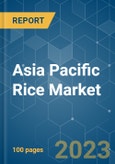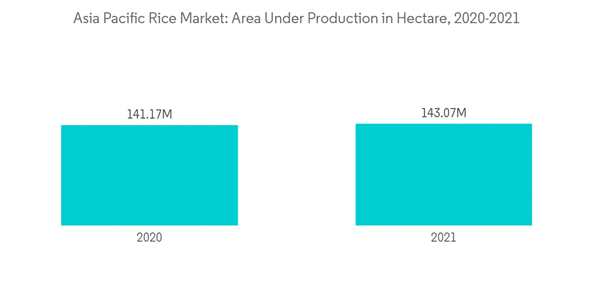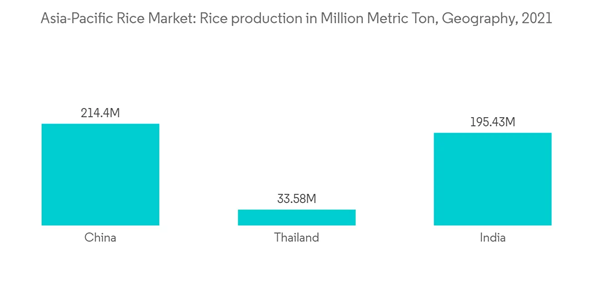Key Highlights
- Rice is one of the most important basic foods on earth. It is the staple food of more than three and a half billion people worldwide. Most rice is produced in Asia, where some 90 percent of the world's rice is grown on 146 million hectares of land an area the size of South Africa. Rice is thus the main source of income for farmers in Asia.
- Unfortunately, rice producers are among the most vulnerable to the impact of climate change and rising sea levels are direct threats to their livelihoods lack of access to financing for improved technology and the lack of awareness and technical knowledge on sustainable rice production methods, etc, So in some countries, satellites are being used to monitor more than 15 million hectares of rice-cultivated land in the Philippines, Vietnam, Cambodia, Thailand, and India for reliable harvest forecasting and this will help authorities to take a sudden action in the event of imminent crop losses and assist affected rice farmers. This technology makes it possible to monitor rice fields during the monsoon period.
- Prices of rice exported from Asian countries has increased and demanded, while Vietnamese traders also increased costs due to the Ukraine crisis. In Bangkok, as corn and wheat prices rise, animal feed makers were looking to use more broken rice, and some traders received interest from buyers in Europe, the United States, Iraq, and Iran for different grades of Thai white rice. All these factors driving the rice market in the region which will anticipated to grow during the forecast period.
- However, in the long term, the market is anticipated to grow owing to the paced urbanization. The per capita rice consumption started declining in middle and high-income Asian countries like the Republic of Korea and Japan. According to a report by FAO, nearly a fourth of the Asian population is still poor and has a considerable unmet demand for rice. According to FAO, rice is presently grown on 146 million hectares throughout the Asia-Pacific region, with China and India dominating over half of the total area harvested.
Asia Pacific Rice Market Trends
Increasing Population in the Region is demanding more Rice Production
The population in the region is rising continuously. For instance, as per the World Bank data, the population of the South Asian region was 1.836 billion in 2019, which increased to 1.998 billion in 2022 which is equivalent to 24.89% of the total world population. The Asia-Pacific region, where more than 60% of the world's population lives, adds millions of rice consumers annually. A large number of the Asian population is still poor, and the demand for rice is increasing by the day. It is in these countries that rice consumption will grow faster. According to FAO, the rice area under production is about 143.0 million hectares which is an increase compared to the previous year.The growth in rice production with stability has been a matter of concern to achieve food security, especially in the region's developing countries, and as a commoner's food item, an increase in rice production, availability, and price is crucial for the whole economy. Similarly, per capita income is also rising in the region. According to the World Bank data, GNI per capita was recorded at USD 11,637 in 2020 for East Asia and the Pacific region, which increased to USD 12,737 by 2021. Rice consumption is anticipated to increase with the rising standard of living in the region.
China Dominates Production and Consumption
According to Food and Agriculture Organization, China produced around 213.6 million metric tons of rice in 2020, with the area harvested being 30.3 million hectares. The country has dominated production over the ages and continues to do so. All rice cultivation is highly labor-intensive. China has a population of 1.4 billion people, nearly all of whom consume rice on a regular basis. Per capita, rice consumption is estimated at 221 pounds per year, nearly 10 times U.S. per capita consumption and one of the highest in the world. China is the second largest importer of rice, bringing in over 5 million tons annually.Rice is generally grown as a wetland crop in fields flooded to supply water during the growing season, In recent years, soil salinity and overuse of fertilizers have presented challenges to rice production, and thus, food security in China. The researcher has developed SR86, which can resistant to saline-alkali soil and other salt-resistant rice strains and have the potential to strengthen food security in China. Additionally, the team is confident that it will be able to cultivate salt-resistant rice across 6.7 million hectares by October 2031. This will increase the production of rice in the country.
China's climate is highly favorable for paddy cultivation, hence, the widespread production. Rice farms are mainly located in Central China (in the provinces of Jiangsu, Anhui, Hubei, and Sichuan along the Yangtze River Valley), and it accounts for about 49% of the total Chinese rice production (National Bureau of Statistics of China). In 2022, The Chinese government is encouraging farmers to plant a new rice variety that can be harvested for several years without reseeding and compared with most rice crops, which have to be replanted each year, perennial rice is cheaper and less labour intensive to produce, and better for the environment and this will boost the rice market in the coming years.
Apart from meeting its huge domestic demand, China also exports a significant quantity of rice across the world. Major importers of Chinese rice are Egypt, Korea, Turkey, Ivory Coast, and Japan. Production is likely to remain high during the forecast period, given the high local consumption and export global demands.
Asia Pacific Rice Industry Overview
Additional Benefits:
- The market estimate (ME) sheet in Excel format
- 3 months of analyst support
This product will be delivered within 2 business days.










